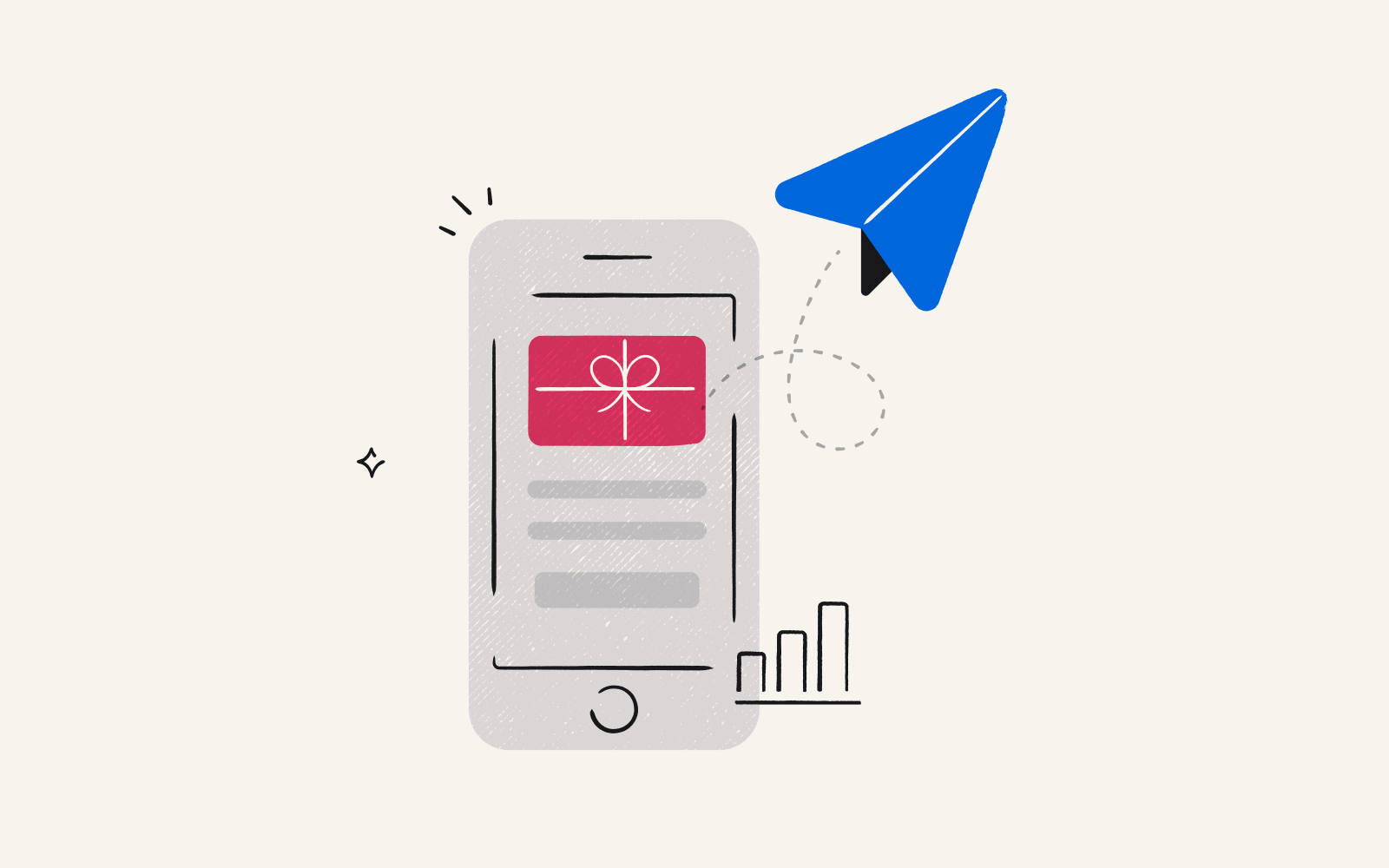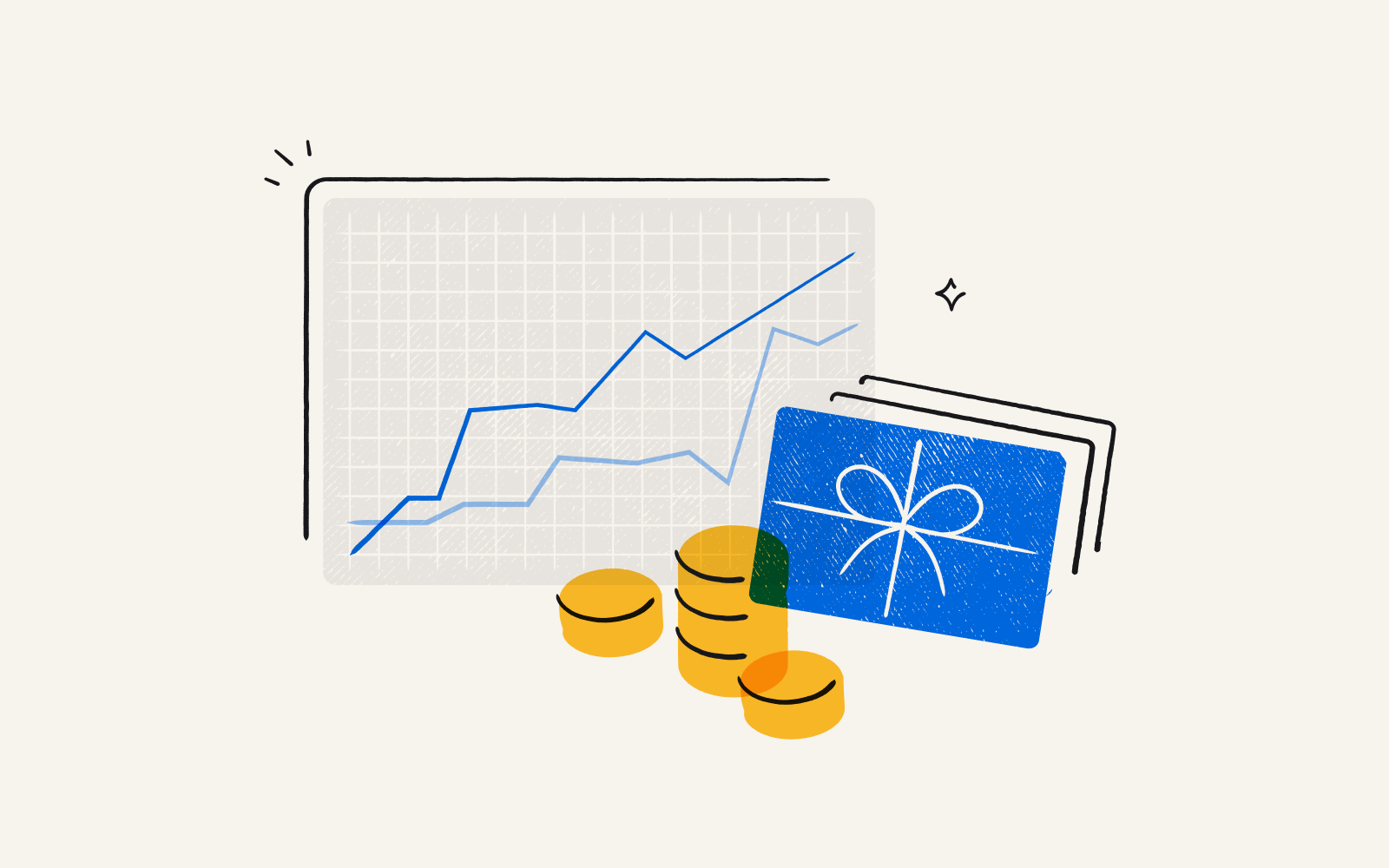The employee reward that’s better than a holiday bonus
By Kate Monica|6 min read|Updated Sep 11, 2023

Divvy up that big end-of-year bonus into a series of smaller employee incentives. Send them out quarterly.
According to an extensive longitudinal study conducted over 2 years in Norway, spreading out the bonus is more effective at boosting employee motivation and effort than a large sum of cash delivered annually.
Employee incentives also reduce turnover. And you don’t have to send much. Sending employees between $50-$200 as part of an employee rewards and recognition program reduces the chances they’ll quit.
By about 43%, according to one 2020 study.
And encouraging existing employees to stick around saves you a lot of money year-over-year. Companies pay between 90%-200% of the original employee’s salary in losses every time they have to replace a worker.
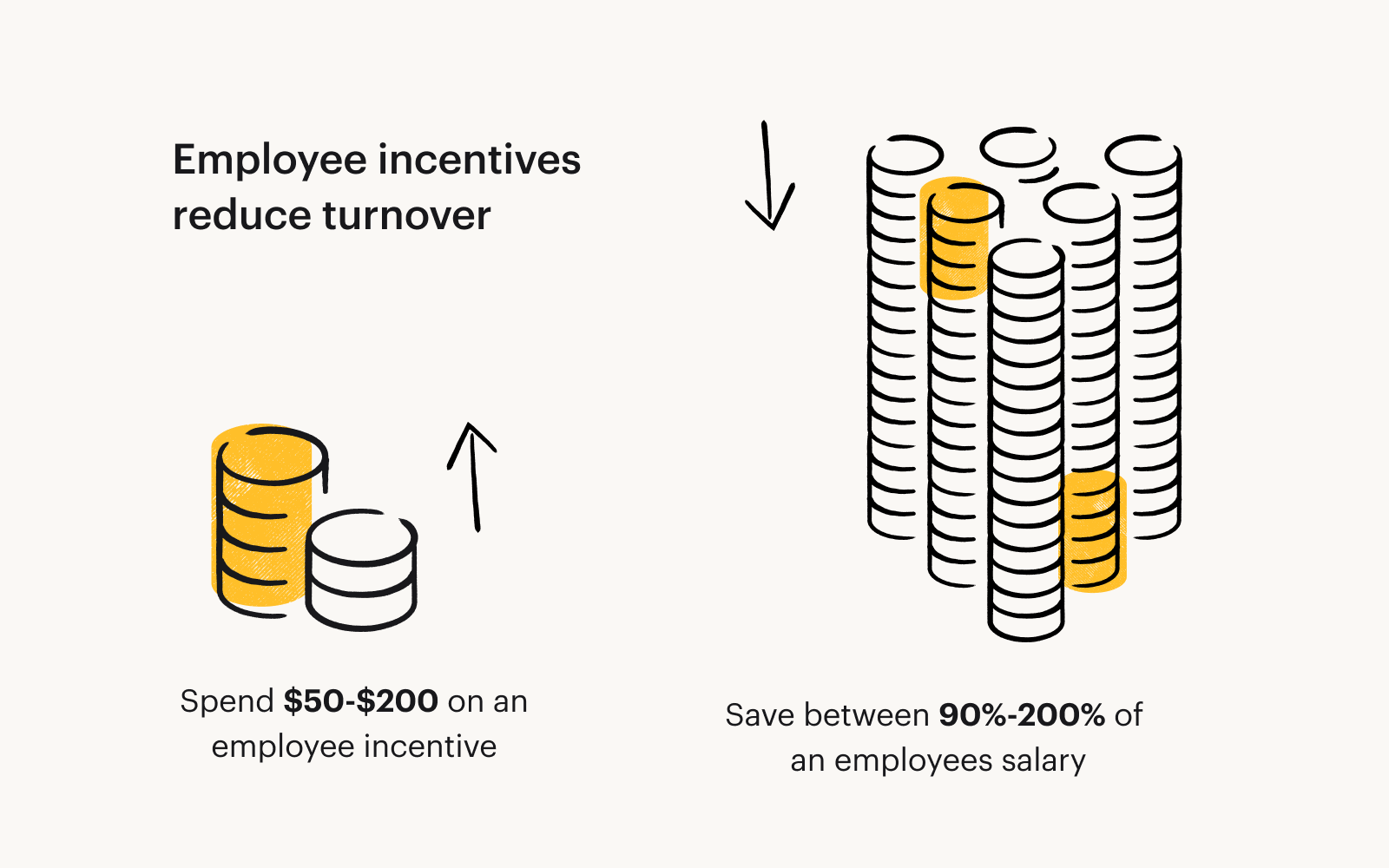
Employee rewards and recognition programs provide different incentives for various performance milestones and life events, including birthdays, holidays, work anniversaries, wedding anniversaries, or success according to various performance metrics.
We’ll tell you how to build an effective and cost-efficient program for rewarding performance and recognizing milestones.
Distribute incentives equitably – not equally
Team-based financial incentives have a significantly higher impact on employee performance when they’re distributed equitably rather than equally, according to a meta-analysis of 146 studies .
Equitably distributed incentives are given to specific individuals or teams based on achievement and performance.
Everyone doesn’t get the same reward – rather, individuals receive different rewards based on their varying levels of performance.
People or teams who perform better get a higher incentive. It’s not equal, but it’s fair.
In the case of equally distributed incentives, everybody gets the same amount at the same frequency regardless of achievement. It’s equal, but it’s not necessarily fair.
In addition to increasing employee performance, equitably distributed incentives also increase employee engagement.
Here’s how to build an equitable employee reward & recognition program and boost employee engagement and performance:
Set clear objectives: Is your program going to reward individual performance, or team-based performance? What metrics will you use to gauge success? Identify how success will be measured and who is eligible for a reward.
Allocate budget: Our internal research shows a reward between $50-$200 will satisfy almost all employees.
If you’re rewarding individual performance, introduce a tiered system in which employees who exceed a certain threshold receive, say, a $50 reward, but the individual who performs best receives a $200 reward.
Alternatively, if you’re rewarding team-based performance, give each individual on the highest-performing team a $50 or $100 reward.
Regardless of the system you implement, a little goes a long way.
Clearly communicate criteria: Develop clear internal communications collateral describing how success will be measured, why eligible employees will be rewarded, and what employees are expected to do. Ensuring everyone understands the rubric goes a long way towards establishing fairness and equity.
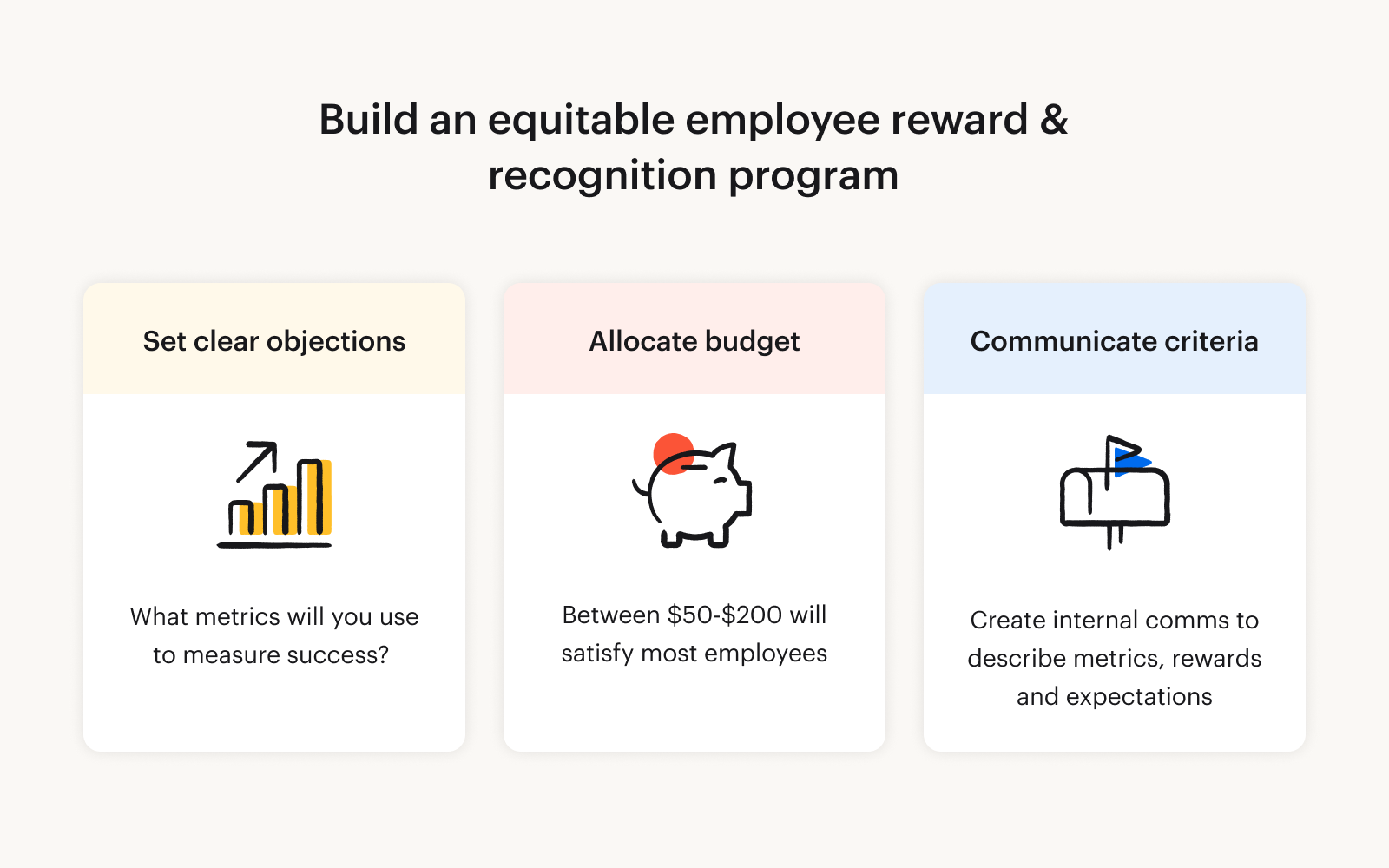
When to send
There’s two types of employee rewards and recognition: performance and non-performance based milestones.
We already told you when to send performance-based incentives: once per quarter. End-of-year bonuses are always well-received, but employees appreciate smaller, more consistent incentives even more.
When it comes to non performance-based milestones, there’s only two events where many people expect a little something from their employers: during the holiday season, and on work anniversaries.
In 2022, we surveyed 1,500 employees across 10 industries as part of an effort to understand the ins-and-outs of employee gifting.
We asked employees across sectors when they expect a non performance-based reward, and discovered:
The vast majority (82%) of surveyed employees expect a gift around the holiday season.
A little under half (45%) of employees expect a gift for their work anniversary.
33% expect a gift for their birthday
13% would like a gift to mark various national holidays
Only 7% expect a gift for their wedding anniversary
Based on this data, it’s wise for employers to send their people a token of appreciation around the holiday season – a gift between $50-$100 satisfies most (67%) of employees, according to our research.
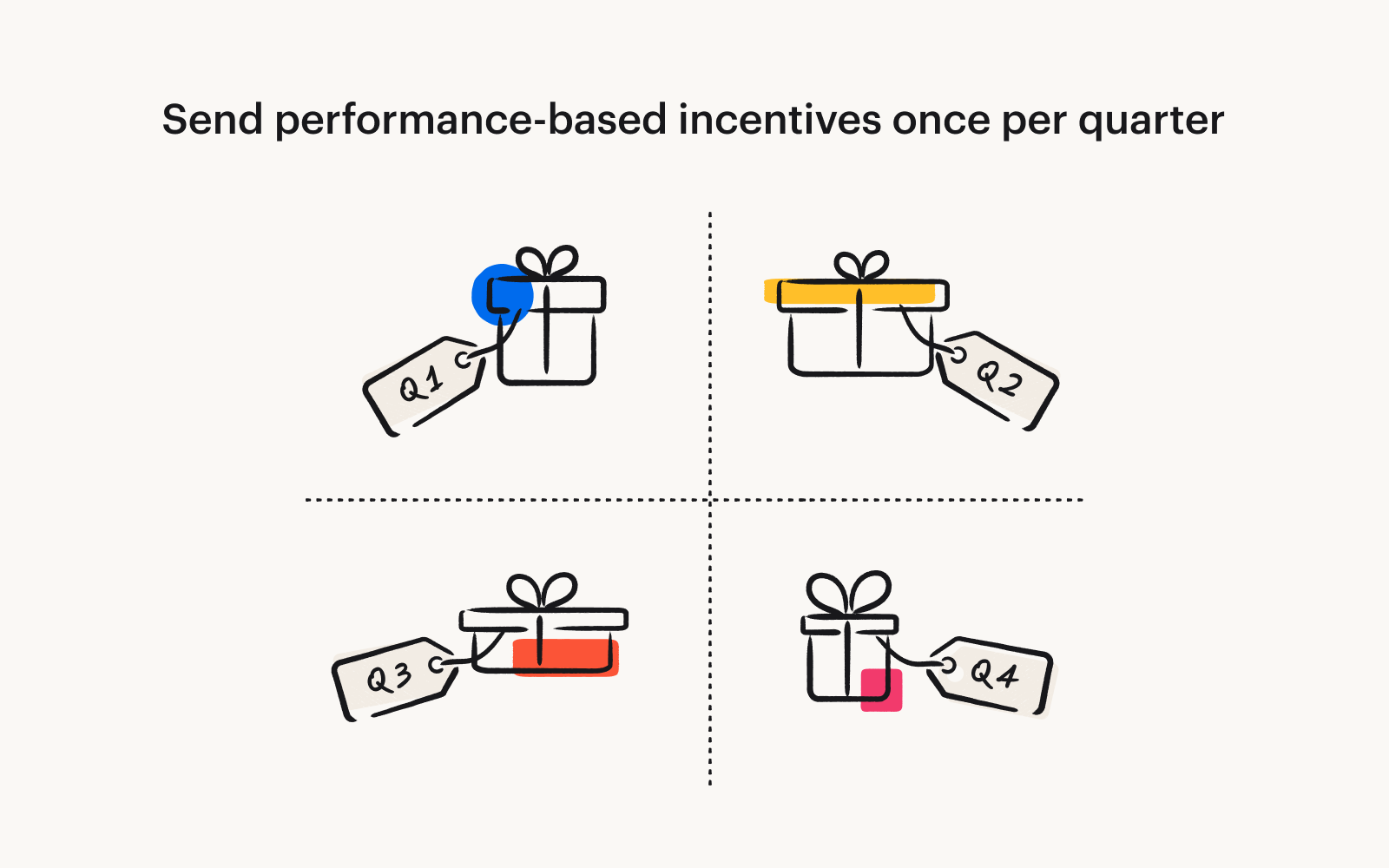
And if employers or HR teams want to go above and beyond, they can send a small gift in honor of their employees’ work anniversaries. This would be a pleasant surprise for most, and fulfill a basic expectation for many.
Apart from work anniversaries and the holidays, employees, by and large, don’t expect any non performance-based rewards from their employers.
What to give
Both non-monetary and monetary incentives are suitable ways to reward and recognize employees for their hard work.
Monetary rewards are pretty straightforward – they include raises, bonuses, equity, and other kinds of financial incentives. And we’ve already told you how much to give – anywhere between $50-$200 will be met with a warm reception.
Non-monetary rewards are a little more nebulous, but still gratifying: praise, greater levels of autonomy or flexibility at work, an increase in responsibility that represents a higher degree of trust, etc.
An important note: when we talk about non-monetary rewards, we don’t mean team dinners or swag. Employees, by and large, hate that stuff.
But which type of incentive do employees prefer?
According to one comprehensive analysis of 7 years of data (Curran & Walsworth 2014), non-monetary and monetary rewards are equally important.
Researchers found using both financial and non-financial rewards in conjunction improves employee engagement and retention.

Combining both types of incentive also had a positive effect on innovation.
Notably, fixed pay (like salary) and individual performance pay (like commissions) have no effect on innovation.
However, variable group pay (or, performance-based monetary rewards) combined with non-monetary rewards did have a marked effect on innovation.
There’s a few simple ways to deliver both non-monetary and monetary incentives to employees:
Use a gifting or incentive platform to send an individualized note to each employee along with their monetary reward using the custom rewards field. They’ll receive a genuine message of thanks or congratulations when they open the email to redeem their reward.
Send a separate email with a few kind words right after sending money.
Thank them in person, or privately over email. Private praise feels personal, intimate, and sincere.
Praise them publicly. This could be in a team meeting, an internal memo, or other public communication channel.
How to deliver rewards and recognition quickly and easily
There are plenty of ways to deliver monetary rewards and words of affirmation and appreciation. But not all of them are super efficient. Particularly if you’re sending rewards to a whole team, department, or company.
This is the fastest way we know of for delivering employee rewards and recognition at scale:
Use a gifting and incentives platform to send payments in bulk.
Type recipient names and emails into the gifting interface.
If it’s a bigger team, use a CSV file to import names, amounts, and a custom message, if you want to include one.
In almost all cases – particularly if you’re sending rewards and recognition to a lot of people at once – it’s easiest to email the incentive (along with your custom message).
Don’t pick a specific gift card - give your recipients plenty of redemption options to choose from. Tremendous’ platform gives recipients 1,000 different ways to redeem their reward. Including direct deposit.
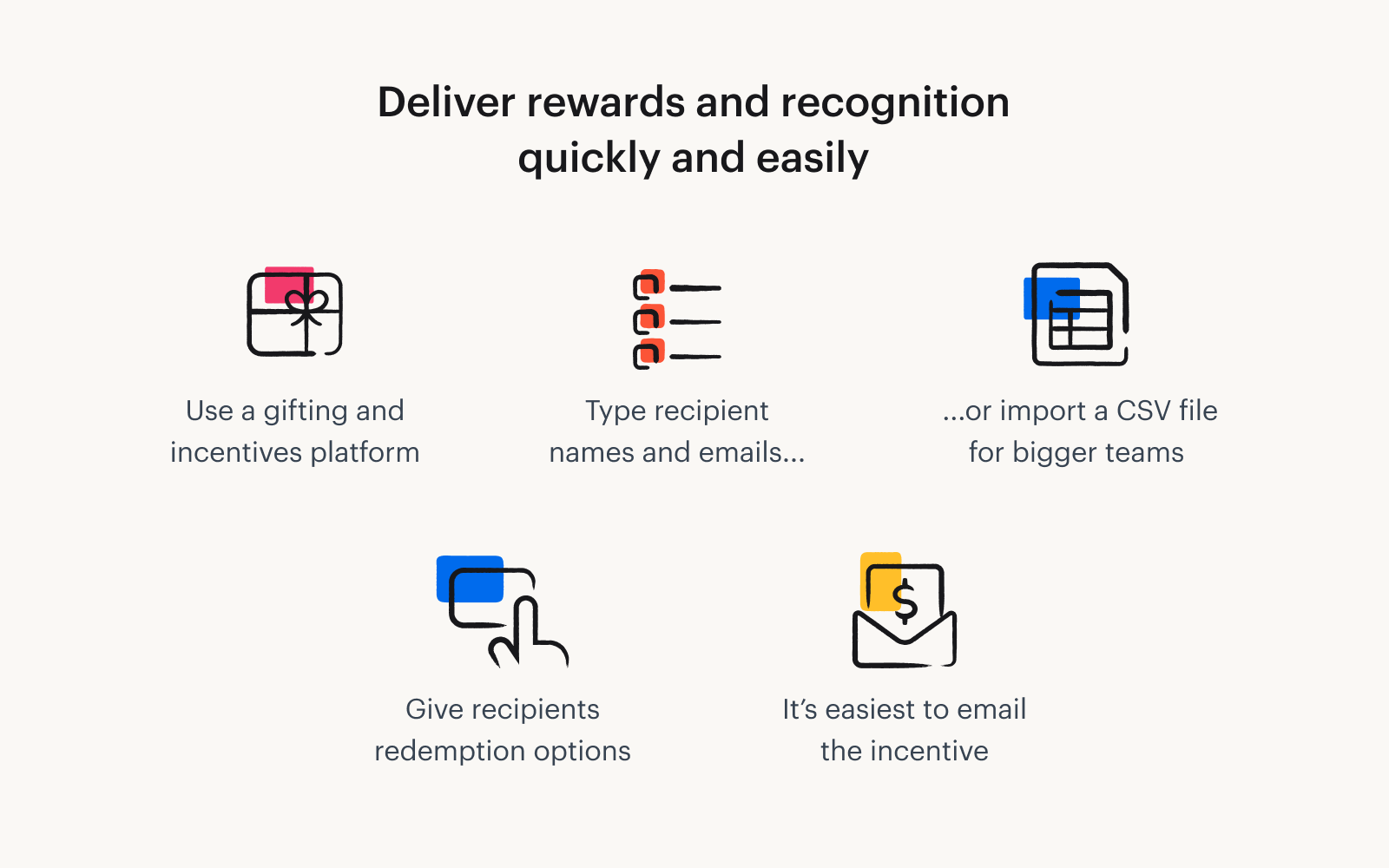
A gifting or incentives platform will enable your team to deliver small amounts to a bunch of different people in just a few minutes, rather than a few hours.
Don’t waste your time licking envelopes or searching for stamps. And don’t buy a bunch of digital gift cards. People prefer to choose their own reward.
Conclusion
To keep employees motivated and engaged, send a $50-$200 monetary reward, delivered over email, with a kind custom message.
And err on the side of sending smaller gifts more frequently, rather than large, annual gifts. Small, frequent gifts have a more significant positive impact on employee performance.
Sending a token of appreciation quarterly – maybe one for high performers, one for the holidays, one for work anniversaries, one for team-based performance, whatever arrangement works for you – will help to increase employee retention and may even contribute to greater levels of innovation across your org.
Published September 11, 2023
Updated September 11, 2023

